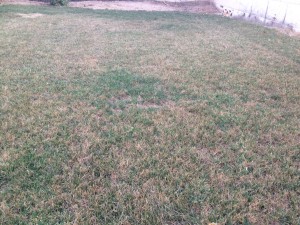Aug
Signs your Lawn is Drought Stressed
Heat Stress or Drought Stress?

There are two general environmental stresses that can affect lawns during the summer: heat stress and drought stress. Depending on conditions, your turfgrass could have one, the other or both at the same time. Understanding the difference between the two, what they look like and how to respond to them accordingly will help you prevent the potential long-term damage that they cause. We will mainly focus on dealing with a drought stressed lawn, however our turf experts want to provide you with an understanding of both.
Heat stress usually effects cool season grasses when air temperatures exceed 90 degrees. When exposed to this kind of heat, the protein structure of the cool season grass begins to deteriorate and once this process occurs in the leaf tissue, it’s irreversible. Drought stress on the other hand is a result of insufficient water. Every turfgrass species has a different resistance to drought stress, however root development is one of the most important factors in preventing the onset of this environmental stress.
Signs you have a Drought Stressed Lawn
Detecting drought stress before it rapidly spreads throughout your entire lawn requires some of the following observational and investigational techniques:
1.) If you start noticing footprints remain on the grass after it’s walked on, this is an indication of the early signs of a drought stressed lawn.
2.) Start by looking at your whole lawn. When drought stress occurs, brown patches tend to appear randomly and in rough patterns.
3.) Locate a brown patch and pull on the grass within that area. If it won’t pull out easily, it’s likely brown due to drought.
4.) Check soil moisture by pushing a screwdriver into the soil in brown and green areas. If the screwdriver penetrates the green spots but not the brown, the soil is too dry.
Caring for a Drought Stressed Lawn
Once you notice the signs and symptoms of drought stress, it’s important to act as soon as possible to avoid any further damage to the root structure of the turfgrass. Begin by switching to an infrequent deep watering schedule rather than a frequent, shallow watering schedule. This will promote deeper growth of the root structure. Next, raise your mowing height to at least 3.5 inches. Finally, avoid applying fertilizer to a drought stressed lawn as this will increase overall stress. Any herbicide treatments should also be delayed until the turfgrass recovers.
Any questions? Ask Jay!

